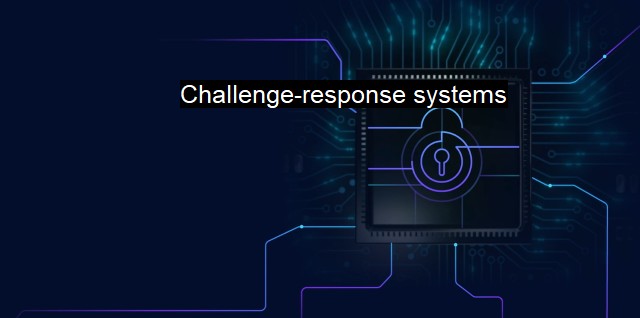What are Challenge-response systems?
Empowering Cybersecurity with Challenge-Response Systems: A Comprehensive Guide
Challenge-response systems play a crucial role in cybersecurity and antivirus technology, in order to protect both data and systems from unauthorized access. It is a type of authentication mechanism used to determine whether a user, device, or system is legitimate. These systems are based on the premise of presenting a 'challenge' that requires an eligible 'response'. it is an effective protocol that verifies the rank and legitimacy of the subject through a series of back-and-forth communications.In order to illustrate the operation of a Challenge-Response system, consider a real-life example of this mechanic working: imagine locked doors that only open when you insert the correct key. Here, the lock poses a 'challenge' to which only the correct key can provide the proper 'response'. Similarly, cybersecurity challenge-response systems work by digitally spawning random challenges that can only be correctly answered by authorized entities.
These systems are frequently employed at the point of login or during the execution of a particular operation that demands privileges. When a user intends to access a constrained resource or confidential data, they are first presented with a challenge. This challenge is a question that is uniquely formulated each time the mechanism is enacted. The question could be anything from a pre-set security question, a one-time password, or a randomly generated string of characters. The user must respond to this challenge.
The beauty of this system is, to respond correctly, the user has to have something that only the legitimate parties posses. It is often a cryptographic key or corresponding algorithms to produce correct responses. The system server then cross-verifies the answer with the response provided. If they match, the user is authenticated and granted access. If they don’t match, access is denied. In some more advanced setups, the user may not even specifically know the answer, but their device or software might generate the answer automatically.
Still, though challenge-response systems providing a highly secure environment, they are not immune to cyber-attacks. An attacker might aim to capture the challenge and corresponding response, allowing them to replay it later to gain access. Accordingly, these systems are usually implemented with stringent controls to protect against such attacks. One approach is to ensure that each challenge is used only once, which makes any captured challenge-response comparison ineffective in future attempts.
The challenge-response mechanism plays a vital role in antivirus systems. Antivirus software often utilizes this mechanism to determine whether a file, program, or website is safe or potentially hazardous. For instance, when a challenge is generated based on certain characteristics of a file - such as a digital signature or unique traits, the antivirus decides if the characteristics match with the known profiles of any malware, virus, or Trojan. Thus, antivirus software constantly challenges and seeks responses to ascertain the safety of digital content.
It may be worth noting that for both cybersecurity and antivirus systems, a sophisticated and strong challenge-response system can vastly increase the safety and security of data and networks. Through this system, the entry of unauthorized users or malicious software can be efficiently mitigified. a challenge-response system operates as an integral, effective method to corroborate authenticity and validate interactions in the realm of cybersecurity. It has become a necessary counterpart to more traditional forms of passwords, providing a robust answer to increasing risks in the digital universe.

Challenge-response systems FAQs
What is a challenge-response system in cybersecurity?
A challenge-response system is a security mechanism used to verify the authenticity of a user or device. It works by sending a challenge to the user or device, which must respond with the correct response in order to gain access to the system.How do challenge-response systems work in antivirus software?
In antivirus software, challenge-response systems are used to identify and block potentially malicious code. A challenge is sent to the code, which must respond with a correct response in order to be deemed safe. If the code fails to respond correctly, it is flagged as potentially malicious and blocked from running on the system.What are the benefits of using challenge-response systems in cybersecurity?
Challenge-response systems add an extra layer of security to authentication processes, making it more difficult for unauthorized users or devices to gain access. They also help detect and prevent the spread of malware and other malicious code.Are challenge-response systems foolproof in cybersecurity?
While challenge-response systems can be effective in improving cybersecurity, they are not necessarily foolproof. There is always the possibility of errors in the challenge or response, or of an attacker finding a way to circumvent the system. It is important to use challenge-response systems alongside other security measures to ensure a comprehensive cybersecurity strategy.| | A | | | B | | | C | | | D | | | E | | | F | | | G | | | H | | | I | | | J | | | K | | | L | | | M | |
| | N | | | O | | | P | | | Q | | | R | | | S | | | T | | | U | | | V | | | W | | | X | | | Y | | | Z | |
| | 1 | | | 2 | | | 3 | | | 4 | | | 7 | | | 8 | | |||||||